Rail Anchor
Limits longitudinal movement

The Gantrail GlideRail® System is specifically designed to protect booms on ship-to-store cranes, which regularly experience harsh operating conditions, often leading to earlier system failure and crane operator discomfort.
This product is proven to withstand issues such as high-impact forces and the corrosive environment in which booms on ship-to-store cranes operate.
Solutions to these have been worked on for several years, with various crane rail systems suppliers attempting to design products capable of withstanding the harsh operating conditions to little avail – which showcases the demand and needs for the GlideRail® System from Gantrail.
We’ve meticulously focused on areas like our clamp design, a specially crafted rail head profile, and rail anchors to give crane operators total peace of mind that the rail will not move during use, or when the boom is raised.
Get in contact DownloadJump to:
Show All

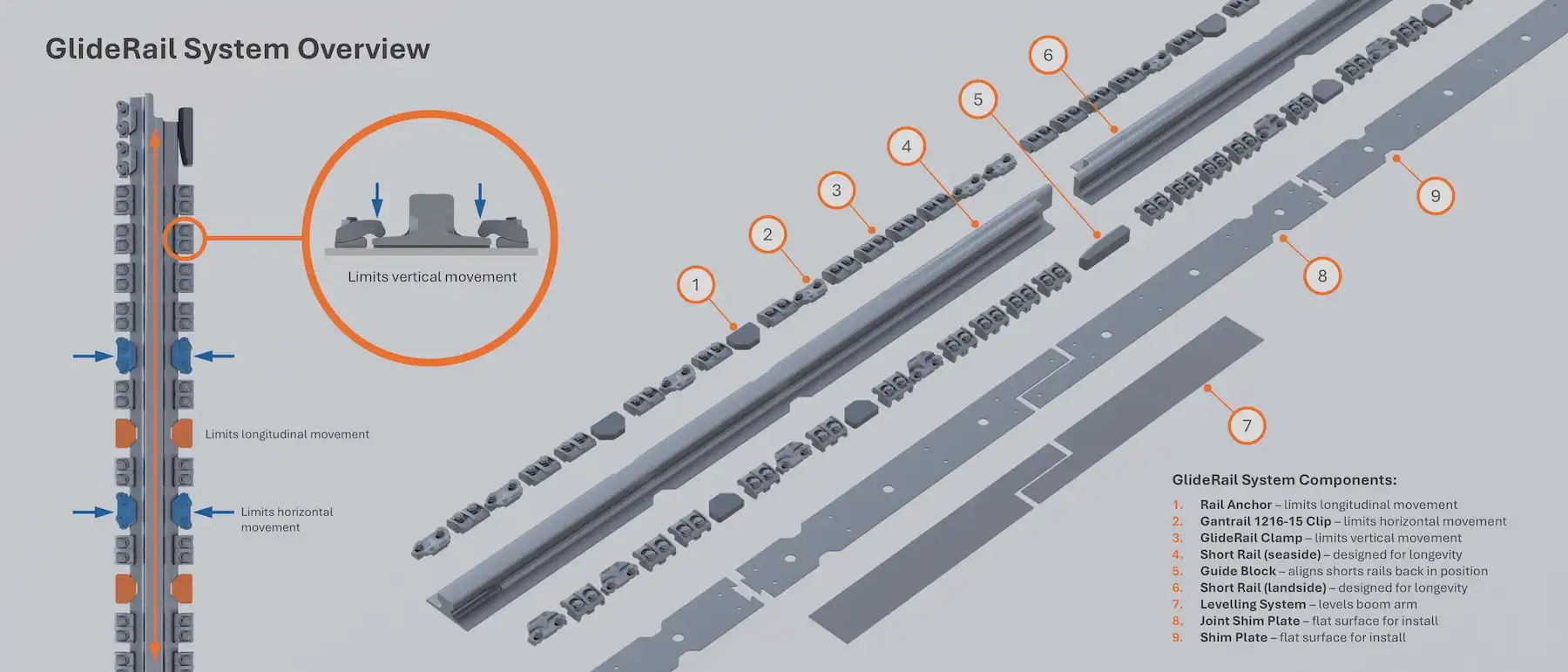
Limits longitudinal movement
Limits horizontal movement
Limits vertical movement
Designed for longevity
Aligns shorts rails back in position
Designed for longevity
Levels boom arm
Flat surface for install
Flat surface for install
The Gantrail GlideRail® System has specifically designed components that work together to create a smooth & seamless transition from landside to seaside across the boom hinge joint.
Starting from the rail supporting surface, our levelling system (7) creates a solid platform to install the shim plates (8.9) in order to position the short rails (4.6). The clip & clamp bases (2.3) are then positioned & welded either side. Once the short rails are in place the 1216-15 clips (2) are used to align the rail horizontally, with the GlideRail® clamps (3) used to align the rails vertically, then the rail anchors (1) are welded in place to stop any longitudinal movement of the short rails. Lastly, the guide block (5) is welded in place at the boom hinge joint to help guide the seaside short rail back into position for when the boom arm is lowered.
These core parts of the system help create a level running surface for the trolley wheel to operate smoothly time & time again and allow the specially design short rail profile to handle the load extending the life of the system.
The GlideRail® system short rails (4.6) are available in A75 & A100 profiles to match the existing in place crane rail.
The short rail is a section of rail positioned either side of the boom hinge joint (landside, seaside).
Short rails come in a range of lengths welded to the end of the long rail and clamped into position in 3 directions to limit movement.
The staggered finger joint at one end is positioned directly inline with the staggered cut in the boom hinge joint.
This allows the GlideRail® system to move apart when the boom arm is raised for container ship docking.
Get in contact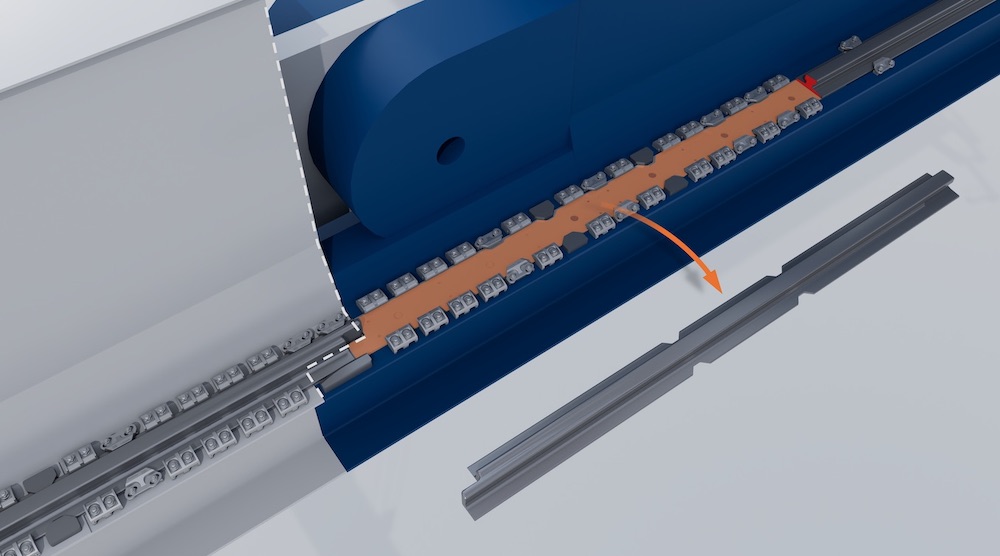
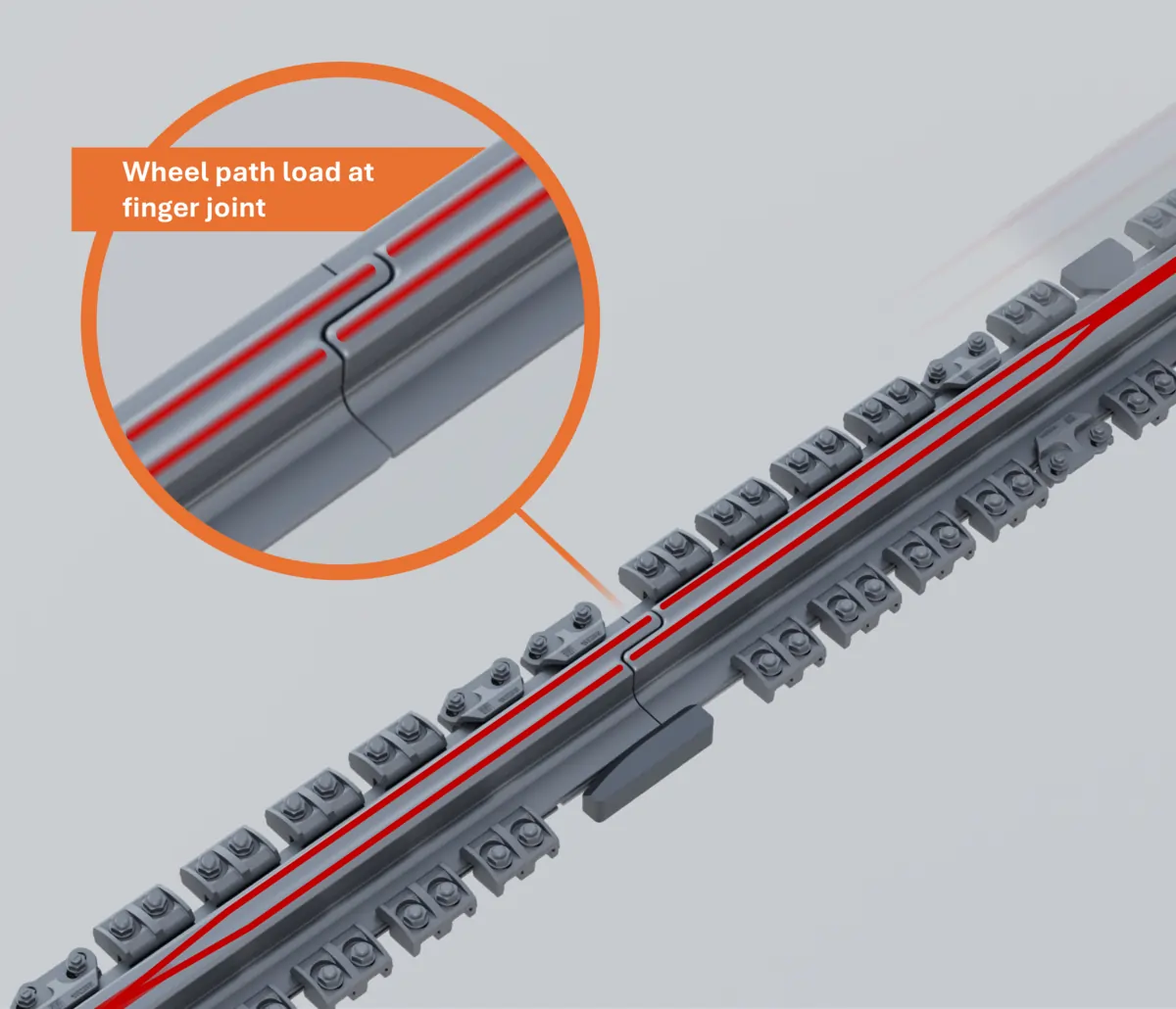
The wheel path has been designed to split the load & focus the stress on 2 points of contact, this reduces the need for maintenance & prolongs the life of the system.
The short rail is manufactured in 880 or 1080 grade material as standard rails allowing for ease of welding & comes in A75 & A100 profile designs.
Get in contactThe short rail profile is specially machined to reduce damage to the rail edge & around the L-shape joint, typically a problematic area for OEM boom hinge designs.
These core parts of the system help create a level running surface for the trolley wheel to operate smoothly time & time again and allow the specially design short rail profile to handle the load extending the life of the system.
Get in contact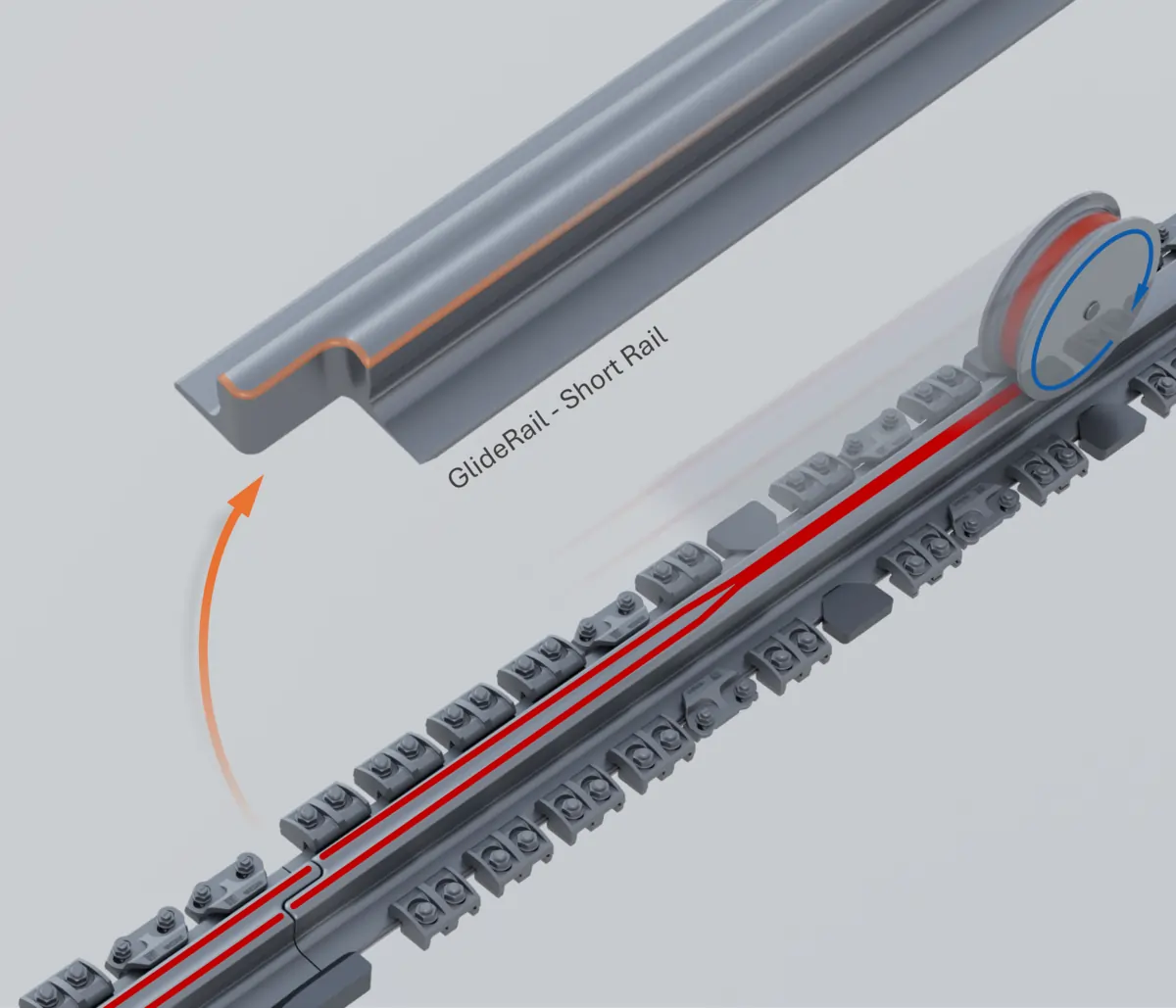
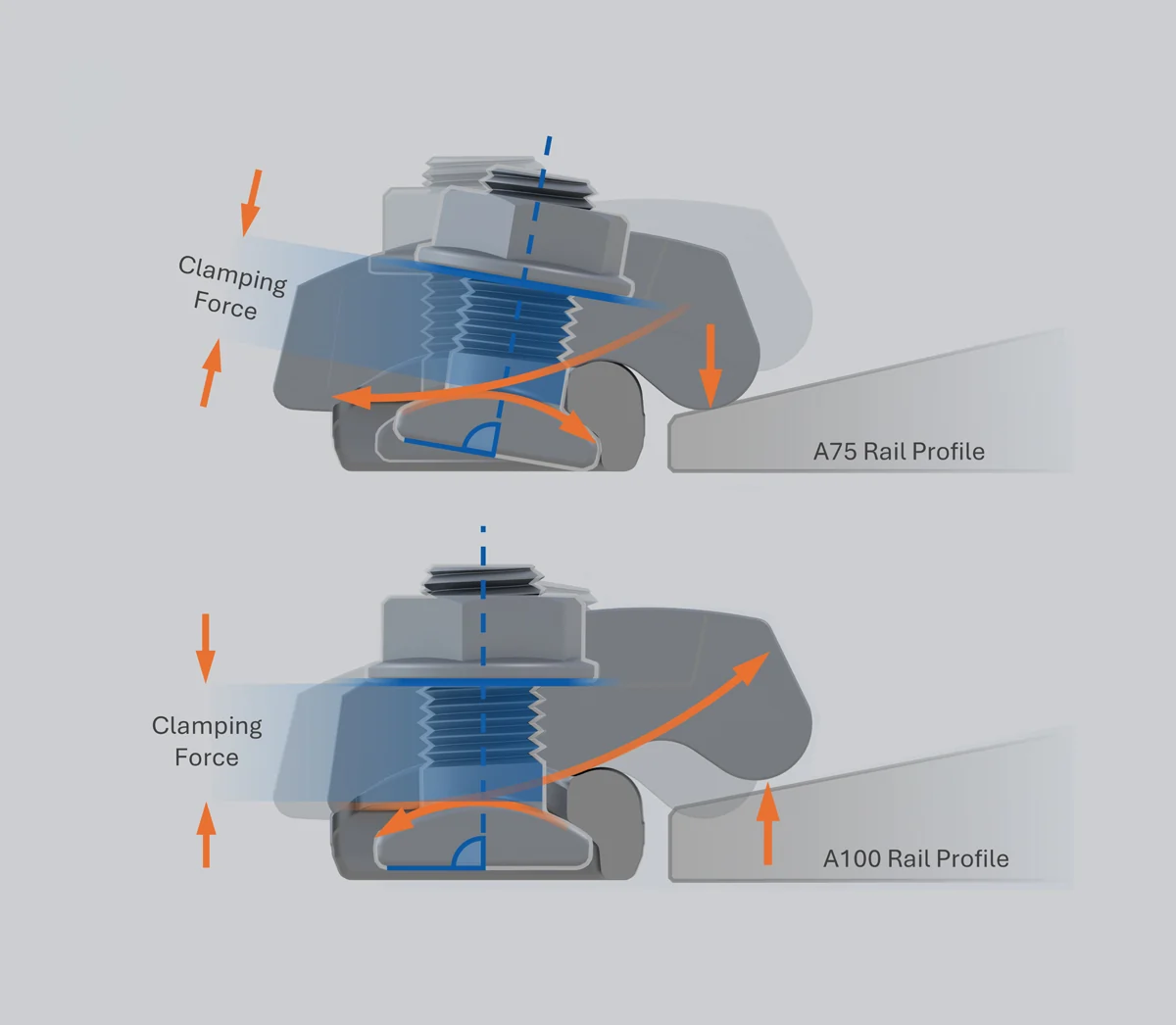
The GlideRail® clamp is specially designed around concentric movement, this allows for a large range of adjustment, a strong clamping force & limits bolt fatigue enabling longevity of the product’s lifespan.
Key Design Features:
The GlideRail® clamp is specially designed to solve the current in market OEM system problems. Each key feature below combines to create part of the GlideRail® system solution.
Key Design Features:
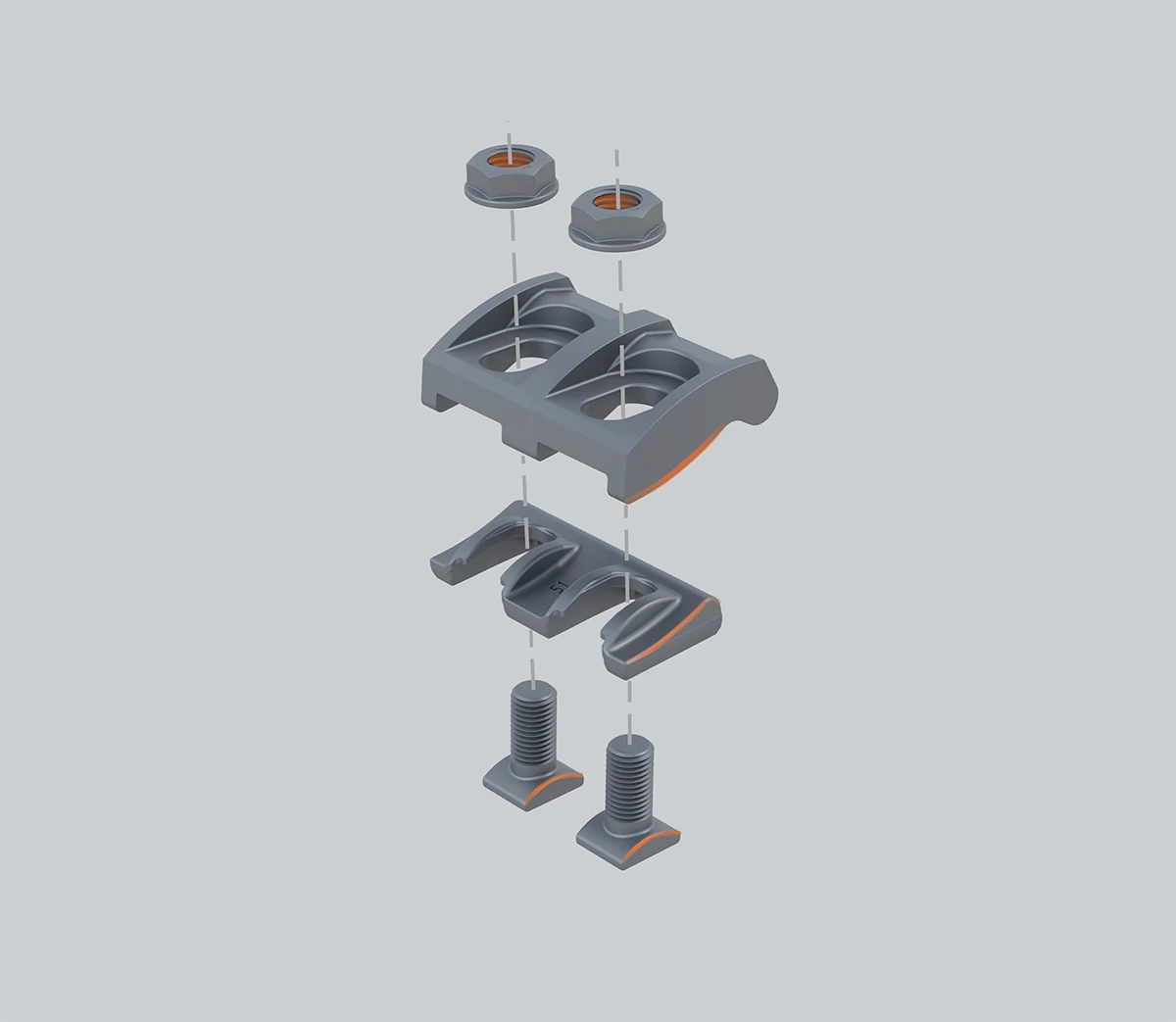


Edge deformation rail wear
Weld failure
Bolts loosening bolt failure
GlideRail® Key Features
OEM Key Failures
The angle cut short rails are one of the most common OEM boom hinge joints in market. The typical wheel path & load runs directly along the top of the rail over the boom hinge joint.
Common design problems:
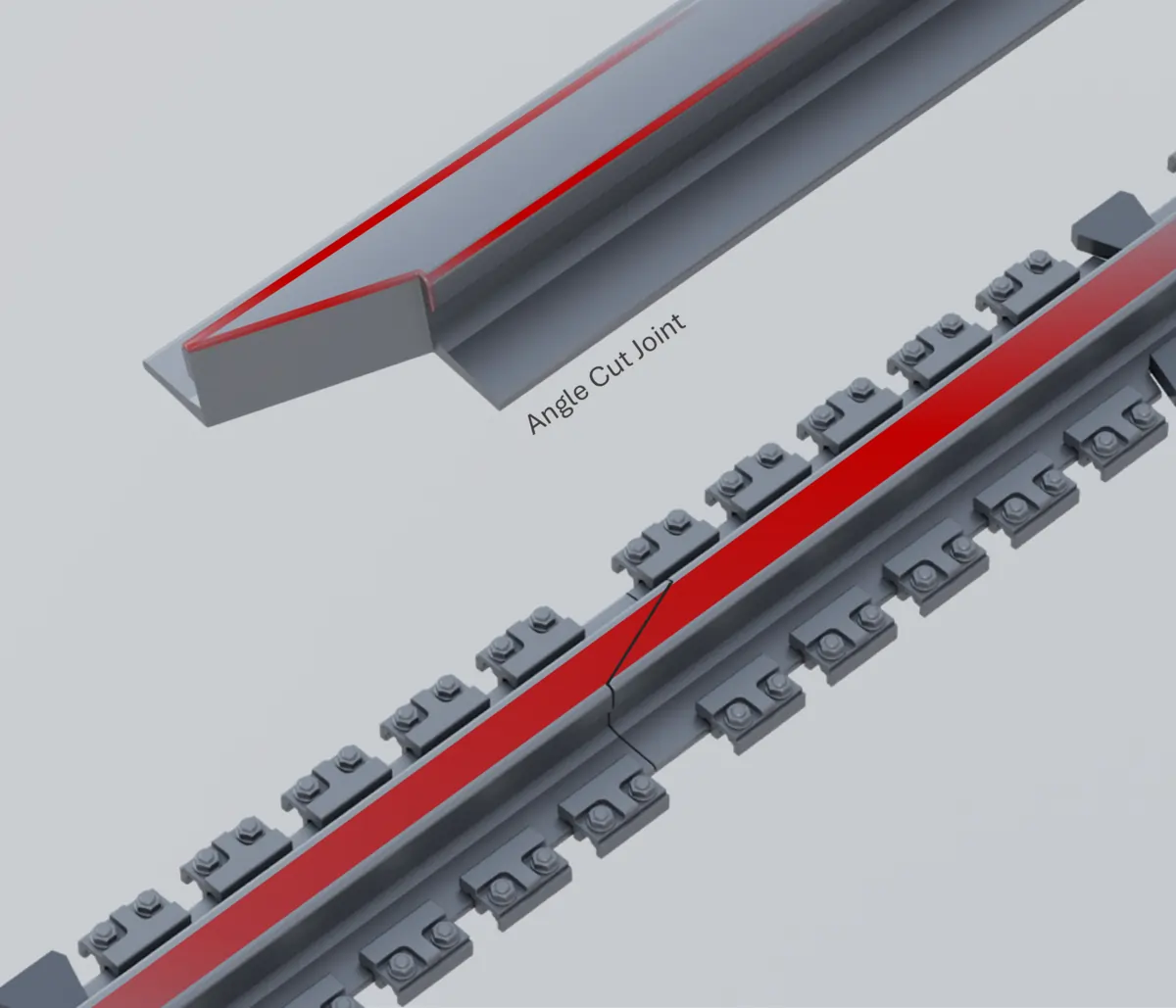
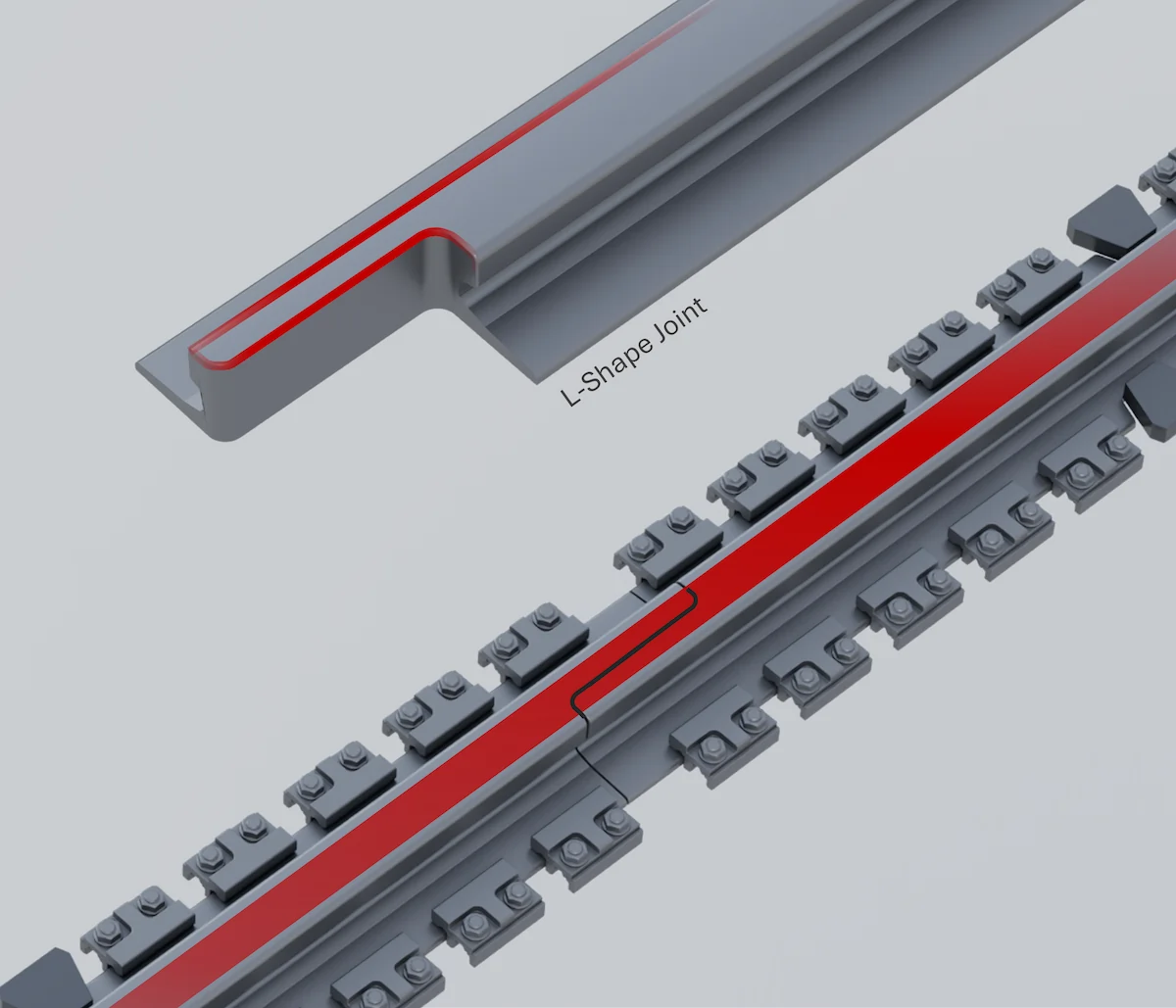
The L-shape short rails are one of the most common OEM boom hinge joints in market. The typical wheel path & load runs directly along the top of the rail over the boom hinge joint.
Common design problems:
The current in market clamp design typically operates by allowing a rotation at a pivot point, onto or up to a rail profile. This results in an impossible rotation of the nut as it attempts to stay parallel to the base resulting in applying a bending force to the bolt.
Over time bolts will loosen creating more movement & vibration throughout the system leading to full bolt failure & further structural damage.
Common design problems:

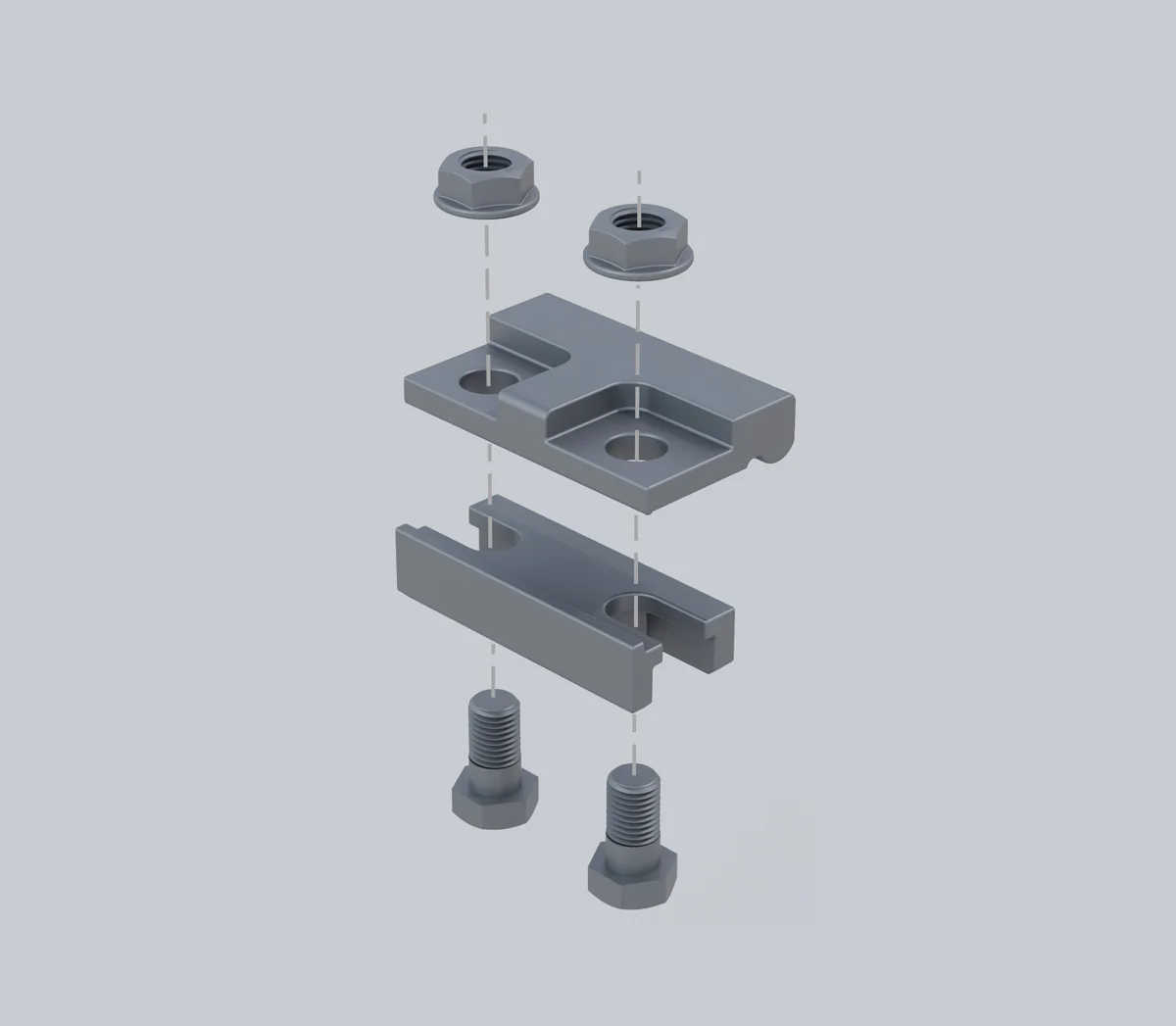
Common design problems:

Gantrail operate worldwide with offices and distributors in most major countries. To find out more information, enquire about becoming a Gantrail partner or if you want to contact your local Gantrail representative, please click below.
Gantrail are dedicated to sharing their 50 years of expertise, showcasing the latest improvements in the design, installation and support of crane rail interfaces that they bring to the industry.
View our video resources